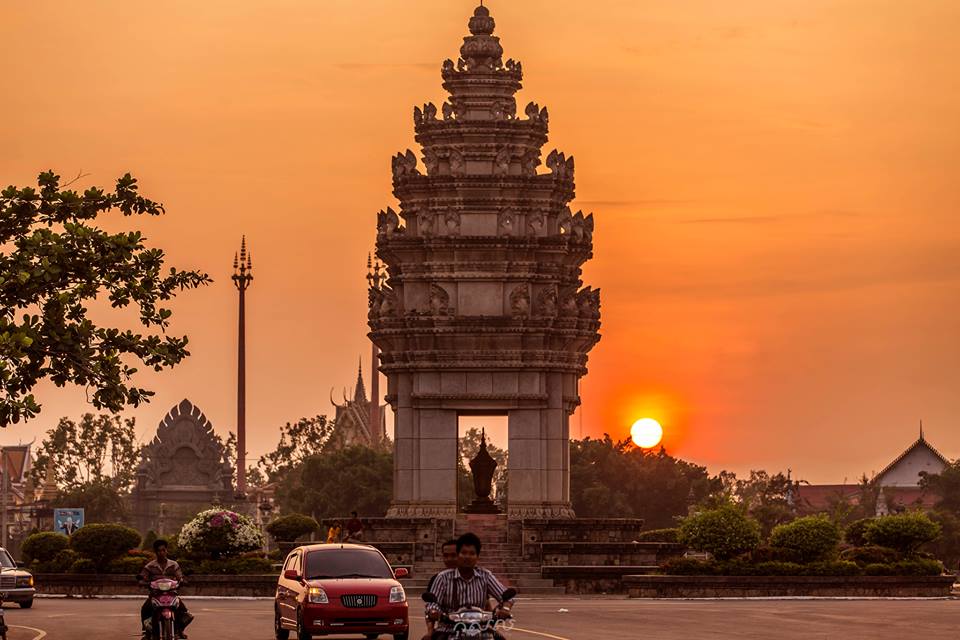Takeo Guide - All you need to know
Takeo is often referred to as “the cradle of Cambodian civilization” due to the former kingdom of Funan's successor, Water Chenla, being centered in the region.
Takeo (literally means "crystal grandfather") is often referred to as “the cradle of Cambodian civilization” due to the former kingdom of Funan's successor, Water Chenla, being centred in the region. Takeo is located in the southwest part of Cambodia, 78 km from Phnom Penh City. The province borders the provinces of Kampot to the west, Kampong Speu to the northwest and Kandal to the northeast and Vietnam to the south. The provincial capital, recently known as the Daun Kaev Town (formerly called Takeo).

Independent Monument in Takeo Province
Much of Takeo province disappears in an annual inundation by the waters of the Mekong and Bassac rivers, leaving Takeo town isolated on the shore of a vast inland sea, and outlying villages transformed into islands.
As the waters recede, an ancient network of canals, which once linked the area to the trading port of Oc Eo (now a ruined site across the border in Vietnam), is revealed. These continue to be vital for local communication and trade, and getting around the area is still easiest by boat – indeed, for much of the year there is no alternative.
History of Takeo
The origin of Funan was controversially claimed to be rooted from Khmers in Cambodia or in Vietnam. Archaeologists from the USA have done research made research trips to Angkor Borei with a view to piecing together the history and story, as well as relics of the Funan period. Today, the Cambodian government seems to attempt to save what they can of the important piece of Khmer heritage.
Culture
Takeo’s economy consists basically of agricultural farming and the related sub-sectors like fishery, rice and fruit cropping. The natural beauty of Takeo is in the Scenic River and the water area surrounding in the rainy season. The man-made beauty mostly comes from a series of canals and waterways that were cut through the surrounding countryside, many a very long time ago, connecting towns, villages, rivers and Vietnam.

The countryside in Takeo
Main attractions in Takeo
Takeo Province is full of other interesting sights as well and because of the short distance and good condition road from Phnom Penh, all are great day trips. If you have a bit more time, spend an evening in Takeo town and take in all the sights. There is a pleasant little place to stay overlooking the river and lake area. A very low key and little-visited town, Ta Keo would be worth an overnight stay if you have the time, but otherwise a trip out to Phnom Da and Angkor Borei merits at least consideration.
- Chruos Phaork: In the land of nature and wildlife in Chruos Phaork, tourists will get too see a lot of greenery. Chrous Phaork is a perfect example of well-balanced biodiversity, where flora and fauna live in a kind of symbiosis. You can find a wide range of flowers, rare plants and rare insects as well as distinctive birds here.
- Neang Khmao Temple: About 27km north of Takeo provincial town and 52km south of Phnom Penh, Neang Khmao Temple was built by King Jayavarman IV for the worship of Brahmanism. The temple was constructed of sandstone and brick following the style of Koh Ker. There’re three temples built side by side, but only two are still standing and both are heavily damaged.

Neang Khmao Temple
- Angkor Borei: Known as a town of several ruins and archaeological digs, Angkor Borei contains artifacts dating back the Funan (4-5th century) and Water Chenla (8th century) as well as the later Angkorian period. This area is a place to be discovered by archaeologists today.

Angkor Borei in Takeo
- Museum of Takeo: Built by the EU organization, the only museum in Takeo province serves the purpose of preserving the relics in the region. Thanks to the long-lasting ancient history, many tourists are inquisitive and admire the exhibited displays in the museum. From the Anachak Phnom period to the Chenla Era, Takeo is now the favorite haunt of tourists.
Climate
The tropical climate here is warm and humid with average temperature around 27 degrees Celsius. The cool season is between November and March, while the hot season starts from March to May. Tourists should avoid the rainy season (May – October) when the humidity can be up to 90% and some countryside roads may be impassable.
Transportation
You can get public transportation like bus and ferry to Takeo. From Phnom Penh, the bus lines are available on Fridays, Saturdays and Sundays. There’re generally extra services during busy holiday periods. Besides, tourists usually get to Takeo by private car, minibus or taxi.
The remaining things to do here would be to visit some of the outlying villages which can be easily reached by motorbike or by boat (in rainy season) or to drink warm beers at the Stung Takeo Restaurant while watching the waterside life.
